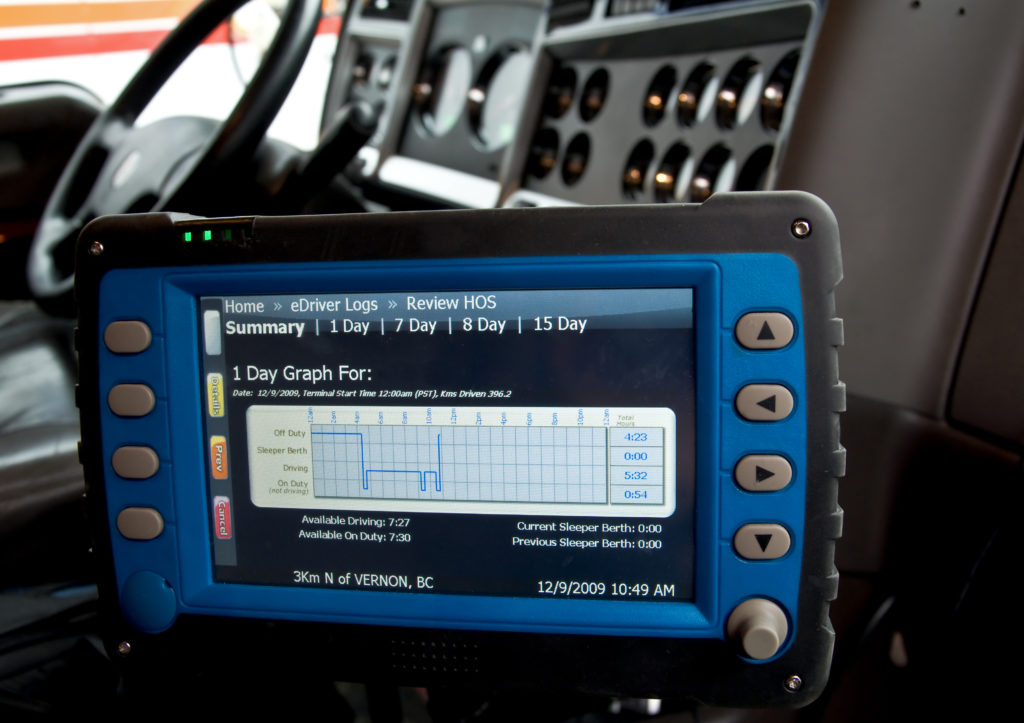
The methods with which truck drivers record yard moves within their hours of service may be changing due to proposed revised regulatory guidance released by the Federal Motor Carrier Safety Administration.
Recently, in a Federal Register notice, FMCSA proposed that it would clarify when a trucker can record his or her time completing yard moves only as “on-duty, not driving.” In the notice, FMCSA gave specific examples of properties that qualify as yards, and noted that commercial motor vehicle movements that take place on these kinds of properties should be considered yard moves and only recorded by the driver as being part of his or her ‘on-duty, not driving’ time as opposed to his or her ‘driving’ time.
In 2015, the Agency released its final rule within its “Electronic Logging Devices and Hours of Service Supporting Documents,” in which it outlined its standards for the minimum performance and design of ELDs. It required manufacturers to have two specific driving categories, authorized personal use/”personal conveyance” and “yard moves.” FMCSA stated that these two categories could be used by drivers however the motor carrier sees fit and explained in its Supplemental Notice of Proposed Rulemaking that the ‘yard move’ category was meant to record the time “where the CMV may be in motion by a driver is not necessarily in a ‘driving’ duty status.”
Still, a lot of clarification was needed regarding what exactly a ‘yard move’ entailed.
“Commenters generally viewed ‘yard moves’ as an on-duty, not driving activity occurring on private property,” said the agency in its notice. “The Agency declined to define the term ‘yard move’ in its final rule, noting that ‘yard moves’ related broadly to the HOS rules, not just to CMV operations using ELDs.”
All truck drivers who must record their hours of service are included in the new guidance by the agency.
“This guidance, if finalized, lacks the force and effect of law and is not meant to bind the public in any way,” the Federal Register notice continued. “This guidance document is intended only to provide clarity to the public regarding the agency’s interpretation of its existing regulations.”
There are four duty statuses for drivers to choose from when documenting their hours of service in cooperation with the Federal Motor Carrier Safety Regulations–sleeper berth, driving, off-duty, and on-duty, not driving. A trucker has to log their duty status times whether they use electronic logging devices or manual paper logs.
Properties that can qualify as yards under the new proposed guidance are: an intermodal yard or port facility; a shipper’s parking lot (that is privately-owned); the place of business for a motor carrier; and a public road if and while public access to the road is limited through specific traffic control tools. These include flaggers, lights, gates, and other control measures. If a trucker must access a public road to get to part of a private property, that travel can be considered a yard move only if public access is in fact limited during that movement.
According to the notice, properties that will not qualify as yards are public rest areas and public roads free of any traffic control measures.
The Federal Motor Carrier and Safety Administration requested comments from the public regarding this proposal, and said it will take into consideration the contents of these comments to device whether or not this new guidance needs any more clarification or explanation.
Additionally, FMCSA has specific questions for which it is requesting responses, including:
- “Would defining ‘yard moves’ in the agency’s regulations provide necessary clarification and therefore benefit carriers and drivers?”
- “Are there other properties or situations where drivers may be in a yard move status that should be included as examples in this guidance?”
- “Would adding examples of yard moves be beneficial for this guidance? If so, please provide examples for consideration.”
- “How should ‘yard’ be defined for the purposes of this guidance?”
Reader Interactions